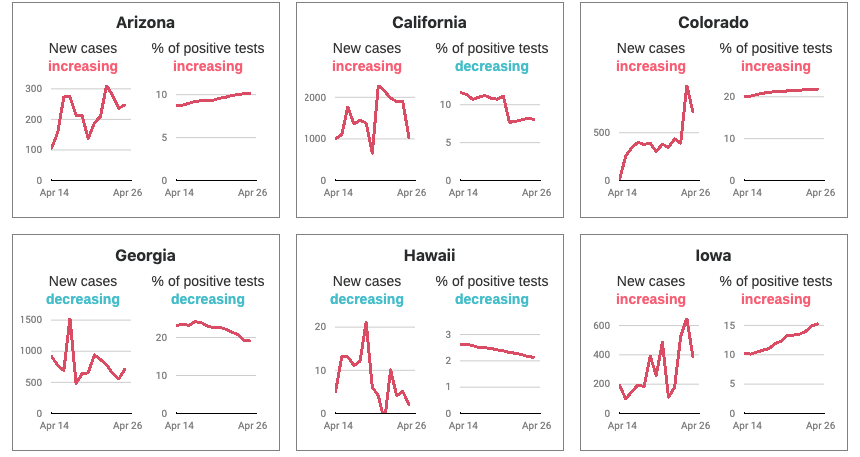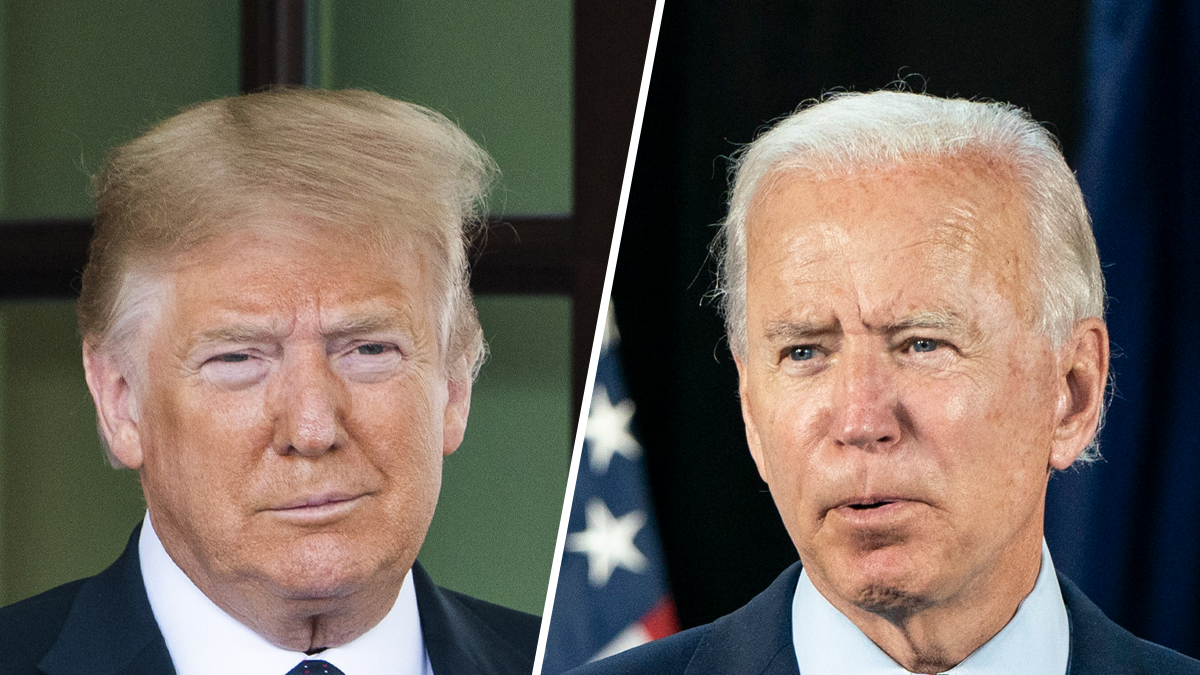As an alarming coronavirus resurgence sets records for confirmed cases and hospitalizations across the U.S. South and West, some governors are backtracking or at least pausing the reopening of their states.
Texas Gov. Greg Abbott on Friday ordered bars to shut down again and scaled back restaurant dining in latest rollbacks amid a surge in confirmed virus cases. The sharp reversal comes weeks after the state was among the first to let retailers and restaurants open back up for business.
Watch NBC6 free wherever you are
Texas, reported more than 17,000 confirmed new cases in the past three days, with a record high of nearly 6,000 on Thursday. The day’s tally of over 4,700 hospitalizations was also a record.
“It is clear that the rise in cases is largely driven by certain types of activities, including Texans congregating in bars,” he said. “The actions in this executive order are essential to our mission to swiftly contain this virus and protect public health.”
Get local news you need to know to start your day with NBC 6's News Headlines newsletter.
Arizona Gov. Doug Ducey, also a Republican, did the same, declaring the state “on pause” as hospitals accelerate toward capacity. And Nevada’s governor ordered the wearing of face masks in public, Las Vegas casinos included.
Coronavirus Pandemic Coverage
In Florida, the state's Department of Business and Professional Regulation on Friday ordered a halt to on-premises alcohol consumption at bars statewide. The move comes as Florida shattered its daily record for new coronavirus cases, reporting nearly 9,000 confirmed infections Friday, NBC Miami reports.
Officials announced Friday that Miami-Dade beaches will close over the Fourth of July weekend due to coronavirus concerns, NBC Miami reported.
The U.S. reported an all-time high of 45,500 COVID-19 cases Wednesday, eclipsing the mark set during one of the deadliest stretches in late April, according to NBC News.
Health experts said a disturbingly large number of cases are being seen among young people who are going out again, hitting the bars and other nightspots, often without wearing masks or observing other social-distancing rules.
How Coronavirus Has Grown in Each State — in 1 Chart
This chart shows the cumulative number of cases per state by number of days since the 10th case.
Source: Johns Hopkins University
Credit: Amy O’Kruk/NBC
While the increase in reported cases is believed to reflect, in part, greatly expanded testing, experts say there is ample evidence the virus is making a comeback, including rising deaths and hospitalizations in parts of the country and higher percentages of tests coming back positive for the virus.
Amid the surge, the White House coronavirus task force, led by Vice President Pence, held its first briefing in nearly two months, signaling a recognition that the administration's can't ignore the alarming increases.
Pence gave assurances that “this moment in the coronavirus pandemic is different than what we saw two months ago.” He said that among other things, the U.S. has more supplies on hand now, with no requests from hard-hit states for equipment such as ventilators and protective gear.
Pence also announced he'll be traveling Sunday to Texas and to Arizona on Tuesday with Dr. Deborah Birx, the coordinator of the White House coronavirus task force, to get "a ground report" of the new outbreaks. Pence will also be visiting Florida on Thursday.
All three hard-hit states have Republican governors who have resisted mask-wearing requirements and largely echoed President Donald Trump’s desire to quickly reopen the economy.
Dr. Anthony Fauci, the nation’s top infectious-disease expert, warned of the "serious problem" facing certain parts of the country and pleaded with the American people to take the virus serious.
"A risk to you is not isolated to you," Fauci said at the task force briefing. "Because if you get infected, you are part — innocently or inadvertently — of propagating the dynamic process of a pandemic. Because the chances are that if you get infected, that you're going to infect someone else."
Deaths from the coronavirus in the U.S. are down to around 600 per day, compared with about 2,200 in mid-April. Some experts have expressed doubt that deaths will return to that level, in part because of advances in treatment and prevention but also because a large share of the new infections are in younger adults, who are more likely than older ones to survive.
The virus is blamed for over 125,000 deaths in the U.S. and more than 2.4 million confirmed infections nationwide, by NBC News' count. But U.S. health officials said the true number of Americans infected is about 20 million, or almost 10 times higher. Worldwide, the virus has claimed close to a half-million lives, according to Johns Hopkins.
Elsewhere around the world, China moved closer to containing a fresh outbreak in Beijing. Another record daily increase in India pushed the caseload in the world's second most populous nation toward half a million. And other countries with big populations like Indonesia, Pakistan and Mexico grappled with large numbers of infections and strained health care systems.
South Africa, which accounts for about half of the infections on the African continent with over 118,000, reported a record of nearly 6,600 new cases after loosening what had been one of the world’s strictest lockdowns earlier this month.
Italy, one of the hardest-hit European nations, battled to control an outbreak among Bulgarian seasonal crop pickers near Naples.
The governor of the southern Campania region insisted that the workers who live in an apartment complex with dozens of COVID-19 cases stay inside for just over two weeks, not even emerging for food — authorities will deliver groceries to them.



